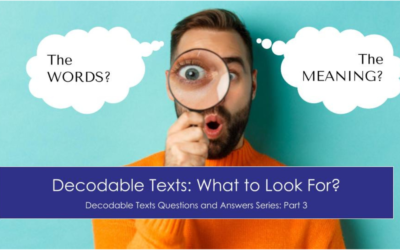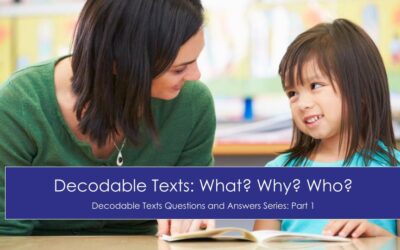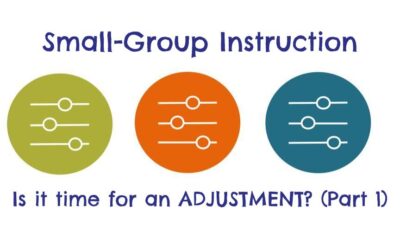Let us know if you’d like to stay connected with updates, information, and notifications of new content.
4 Things that Might Surprise You About ❤️ Heart Words
As more and more schools are making shifts to more brain-friendly practices, many have embraced the idea of marking certain parts of a high-frequency word...
What is Word-by-Word Reading, and Why is it Okay for Beginning Readers?
Listening to proficient readers, it is easy to assume that the word you hear them say is the word their brain is processing. From the outside-in, it just...
We’ve Got News to Share! 6 Ways to Bring the Science of Reading into the Upper Elementary Classroom is coming soon!
Friends, When we wrote our little book, Shifting the Balance: 6 Ways to Bring the Science of Reading into the Balanced Literacy Classroom, we wanted it to be...
A Phonics Lesson Planning “Easy Button!”
We love it when educators ask for something to simplify their busy lives, and we can find a way to make it happen! Since our Fall 2022 blog series...
Decodable Texts Q&A (Part 6): More Ideas for Getting Started
In this Decodable Text Series, we’ve been exploring questions about the place, the purpose, and the practicality of using decodable...
Decodable Texts Q&A (Part 5): What About FREE Decodable Books and Texts?
Tax-free. Gluten-free. Free sample. Free time. Free shipping. Free parking. Who doesn’t love a freebie? We know we...
Decodable Texts Q&A (Part 4): What Else to Look For – The MEANING
We love finding a Netflix or Prime series that we can count on - one that gives us something to think about after watching as well as...
Decodable Texts Q&A (Part 3): What to Look for – The WORDS
In the last couple of blogs, we’ve unpacked these three questions about decodable texts:Who really needs decodable texts, anyway?What is a...
Decodable Texts Q&A (Part 2): How many?
Last week we launched a series focused on questions and answers about the very hot topic of decodable texts. We explored what decodable texts are, why they...
Decodable Texts Q&A (Part 1): What? Why? Who?
Decodable texts! Conversations about them seem to be popping up everywhere these days!If we’re honest, we have to admit that we both started this journey with...
What do Dark Chocolate, Coffee, and Literacy Instruction Have in Common?
It’s tempting to look for research to prove an opinion we already hold and feel deeply committed to. Kari loves dark chocolate. And she knows there’s research...
Adjustments to Small-Group Instruction (Part 2):What else is STILL IMPORTANT, and What else NEEDS RECONSIDERING?
Last week, we shared 5 adjustments that can help you bring small-group instruction for early decoders more in line with your other shifts to early literacy...
Adjustments to Small-Group Instruction (Part 1): What’s STILL IMPORTANT and What NEEDS RECONSIDERING?
What about small-group instruction? What changes in light of new learning? What stays the same? If you're like many of the educators we work with, questions...
Using our Flexible Phonics Lesson Template (Part 8): Spelling Comparisons
Have you ever set out to make a big purchase like a washing machine (TV, car, computer), only to discover that you don’t know enough about the two options to...
Using our Flexible Phonics Lesson Template (Part 7): Word Chains
After our last blog series exploring each component of our Explicit Phonics Lesson Template, we knew we had to revisit one component in particular: Explicit...
Using Our Flexible Phonics Lesson Template (Part 6): Reading Text
Today’s post introduces the final component of our Explicit Phonics Lesson Template. Your readers have made it to the finish line. They’re ready to read...
Using Our Flexible Phonics Lesson Template (Part 5): Writing
We’ve all had them! The kind of days when you just need to call a teacher friend on the way home from school to talk to someone who just “gets it.”This is...
Using Our Flexible Phonics Lesson Template (Part 4): Blending Words
This week, we help students develop trust. Trust?! YES, trust! Students will take the skills they’ve learned in the first two components of our Explicit...
Let us know if you’d like to stay connected with updates, information, and notifications of new content.



















